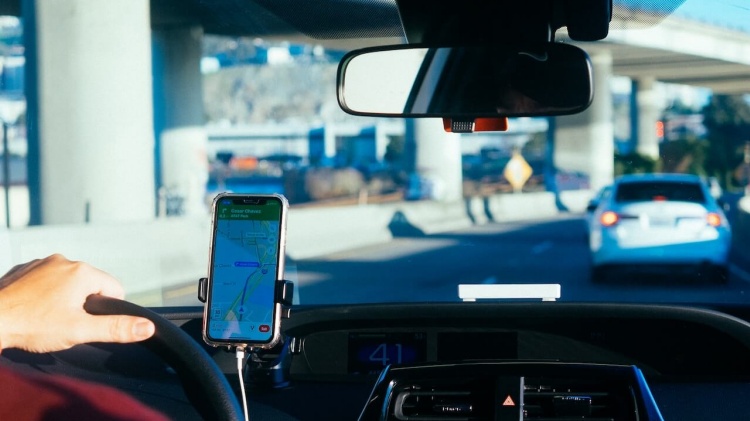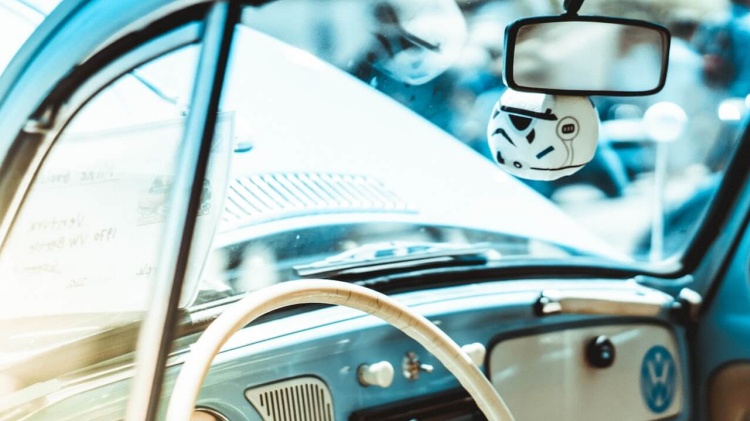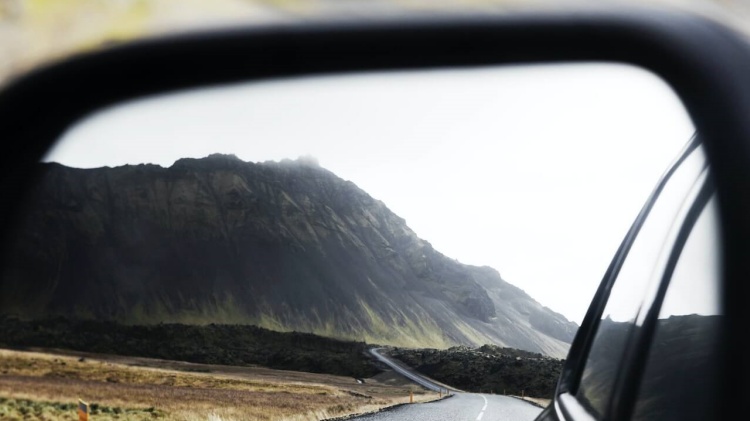Installing a mirror for eyes-on visibility of rear passengers provides invaluable peace of mind for drivers.
However, improper positioning risks safety. Optimizing the viewing angle while securing stable adhesion and eliminating hazardous obstruction deserves meticulous attention.
Follow this comprehensive tutorial for expertly adjusting mirrors to balance optimal sightlines and crash-ready mounting.
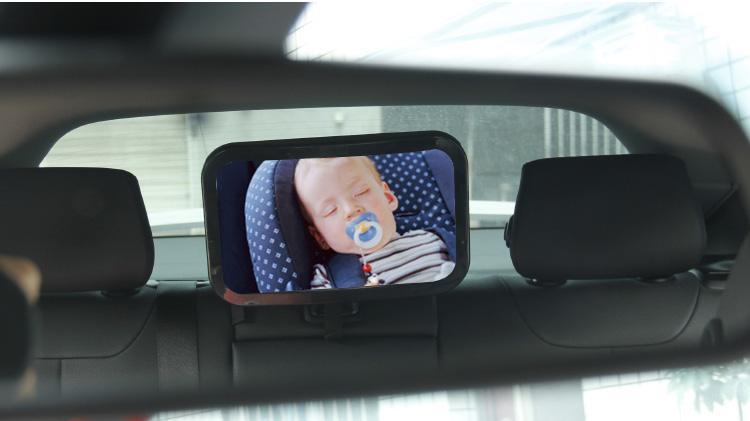
Why proper car seat mirror positioning matters
Beyond the basics of affixing a mirror to see the baby in the backseat, tailoring the precise direction and angle of reflection meaningfully impacts convenience and safety. Well-positioned mirrors allow quick informative glances without straining. Suboptimal alignment causes glare and visual disconnect.
Most critically, hazardous proximity to airbag zones or detachment turning mirrors into projectiles also endangers occupants. Careful adjustment mastery begets clearer views, fewer driving distractions, and vital accident protection.
Choose the appropriate mirror size
Dimensions influence potential mounting locations and effectiveness. Larger mirrors provide expanded views but may prove overly intrusive. Compact offerings integrate more discretely with fewer sightline impediments.
Consider:
- Vehicle and seat dimensions
- Number of rear passengers
- Scope of desired visibility
Guidelines:
- 5”-7” diameter suits most needs
- Rectangles maximize side views
- Ovals offer more overhead height
Match size appropriately to your car’s layout. Test templates if uncertain. Some flexibility exists to tweak angles and distances later during installation. But ideal visibility stems from an apt foundation.
Where to position the mirror
Strategic positioning balances ergonomic accessibility and crash dynamics.
On headliner/ceiling
Headliner installation enables an aerial view peering down over the baby’s seat, keeping the mirror completely out of airbag deployment zones. But overhead positioning presents tricky upward angle adjustments.
Pros
- Does not impact airbags
- Provides top-down perspective
Cons
- Challenging sightline alignment
- Limited side visibility
On rearview mirror
Alternatively, integrating the mirror onto the rearview mirror frame facilitates convenient front-window visibility. Carefully angle towards the adjacent passenger window rather than centrally blocking the driver’s view.
Pros
- Ergonomic driver visibility
- Leverages existing rearview real estate
Cons
- Can potentially obstruct airbags
- Reduces overhead visibility
On headrest post
Some mirrors feature clamps to grip rear headrest posts just behind the driver’s seat to provide a kind of over-the-shoulder peripheral view.
Pros
- Consistent proximity visibility
- Minimal forward obstruction risk
Cons
- Limited to only the rear middle seat
- Susceptible to vibration slippage
Evaluate layout factors and safety dynamics to determine optimal positioning. Seek professional guidance for recommendations if uncertain.
Customizing mirror angles
Reflection geometry involves delicately balancing glare avoidance with opening sightline pathways unlikely to be occluded by passengers.
Glare elimination
Angle mirror to point downward or upward slightly rather than directly backward. Blue light-reduction coatings also effectively cut glare. Enable dimmable lighting features if available.
Passenger clearance
Passengers, especially front seat occupants when mirrors integrate with rearview assembly, can inadvertently block sight lines. Carefully tweak side-to-side and tilt angles to mitigate.
Vehicle ergonomics
Consider the relative heights and lines of sight linking the driver’s eyeliner, the mirror’s position, and the baby in the rear seat to choose angles granting an unobstructed view. Diagrams detailing interior geometry and measurements can inform optimal configurations.
Be prepared to meticulously fine-tune multi-axis angles during test drives to target precision alignment. Mark optimum settings perhaps with reference stickers to ease reorientation when passengers prompt readjustment needs.
Robustly secure against vibrations
The constant bumps and vibrations from uneven roads can compromise mirror adhesion and stability if mounting proves sub-par.
Adhesive mounts
Thoroughly clean contact surfaces then firmly press adhesive-backed mounts for 60 seconds to fully seal the bond and prevent loosening over time.
Straps & Clips
Secure hooks, carabiners, elastic bands and adjustable straps tightly around posts and frames so attachments dig into foam covering rather than slip.
Hardware reinforcement
Consider adding supplemental zip-ties, anti-slip mesh, threaded nuts, or double-sided foam tape for doubly redundant adhesion and friction at connection points.
Test shake mirrors vigorously once installed to verify no slipping or detachments result before securing precious passengers and hitting the road.
Guidelines for precise yet pragmatic adjustment
While seeking the clearest aesthetic view proves tempting, crucial safety considerations warrant persistent priority. Follow these real-world recommendations for pragmatic precision:
Do
- Frame facial visibility only
- Angle slightly down/up to avoid glare
- Check sightlines from all seats
- Attach foam edge protectors
- Shake-test for slippage
Don’t
- Obscure driver visibility
- Impede airbag zones
- Touch or block sensors
- Overstuff attachment area
- Adjust while driving
Adjusting mirrors certainly involves some trial and error. But remaining vigilant about safety and stabilization means achieving optimal orientation just takes a bit more care, not any complex rocket science!
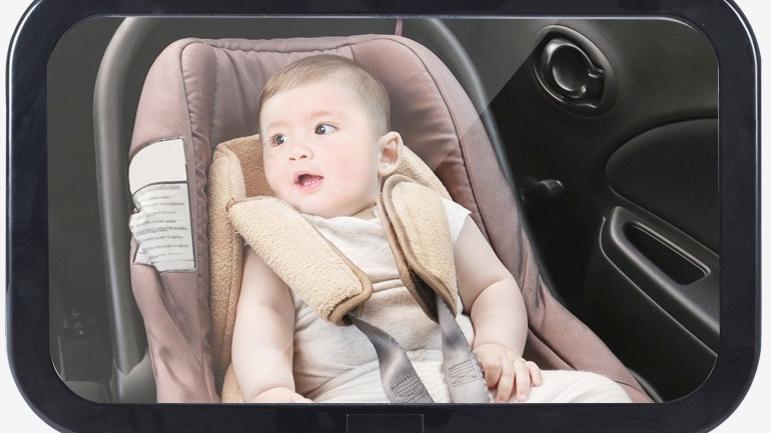
Troubleshooting tricky sightlines
Frustrating impediments sometimes obstruct seemingly well-positioned mirrors. Target-tailored troubleshooting tactics to rectify the most common alignment headaches:
Problem: Foggy distorted images
Solution: Heat/cool to mitigate fogging or scrub clean then properly re-angle relative to the sightline
Problem: Glare blocks view
Solution: Enable dimmable lighting features if available or angle further away from light sources
Problem: Kids block the view
Solution: Tweak the side-to-side mirror direction to edge past passengers
Problem: Vehicle headrest interferes
Solution: Adjust the driver’s seat positioning relative to the mirror or modify the mirror mount height
With strategic readjustment informed by layout awareness and troubleshooting savvy, resolving frustrating limited views proves entirely achievable.
FAQs – Mounting location queries
Adhering to strict safety standards regarding positioning merits emphasis alongside addressing common practical concerns:
Is overhead or rearview mirror mounting safer?
Overhead typically garners the least obstruction concerns but orienting the glare-free sweet spot angle proves tougher. Rearview models angle more easily but risk some slight airbag impediments. All installations warrant professional vetting.
Can mirrors touch airbags?
Not! Strictly prohibit proximity to or contact with airbags, sensors, antennas or cameras. Utilize spacers if needed to offset mirrors adequate safe distances away from hazardous zones.
What about headrest post mounting?
While avoiding airbag interactions, headrest-post-mounted mirrors limit views to only the adjacent middle seat. Rattle-resistant adhesion also proves challenging over bumps. Still, a potentially pragmatic option warranting adjustable angles.
Let’s recap
Positioning mirrors for optimal baby visibility without compromising crash protections deserves meticulous adjustments and troubleshooting. Choose size appropriately, weigh location options, perfect sightline geometry, securely attach against vibrations, and rectify view obstructions by targeting the root layout causes.
With patient precision balanced by safety conscientiousness, achieving the ideal visibility-enhancing mirror orientation remains entirely achievable!
Expanded tips for identifying optimal mounting locations
Theoretically, any flat surface could potentially serve as an adapter zone for mirror mounting if appropriately prepared and reinforced. Yet strategically identifying natively optimal locations suited to anchor adhesion and align angles proves instrumental in streamlining stable visibility success.
Consider running a hand along less obvious ridges and curves feeling for texture transitions and evaluating relative positioning to develop a spatial layout awareness. Headliners often integrate indented features and varied paneling ideal for tucking mirrors partially recessed rather than protruding awkwardly.
Similarly, the transition lip between windshield and ceiling surfaces frequently goes overlooked as offering a discreet ledge. Consulting internal geometry diagrams can reveal additional opportunities suitable for car seat mirrors mounting beyond the default rearview and overhead spots.
Factor in too that suction solutions now leverage nano-textured polymer sealants able to firmly grab grooved grainy suede-like upholstery beyond just glass. This exponentially expands candidates for potential mounting zones.
To fully leverage touch, visual examination and informational resources when seeking out unconventional yet optimal car mirror mounting locations. Custom solutions and problematic constraints do exist, but clever free-space identification paired with ultra-adhesive innovations enable securely installing clear visibility almost anywhere!
Recommendations for mirror usage at night
Driving after dusk ratchets up the difficulty of peering through mirrors lacking sufficient illumination. Yet maintaining sightline connectivity proves arguably even more critical during darker hours.
So properly equip and strategically utilize mirrors to keep babies perceptible despite diminished light. Models with built-in accent lighting featuring manual or automatic dimming naturally prove optimal for around-the-clock visibility.
If choosing versions lacking integrated lighting, then position near interior dome lights during overnight travels. Note, that LED screens emit directional illumination as well, so angle mirrors accordingly to capitalize on that supplemental glow.
Enable any supplemental running lights, map spotlights or other cabin luminaires to collectively brighten the reflection. Light-enhancing glasses, anti-reflective coatings and glare-reduction tints also clarify visibility.
Frequently doublecheck baby through the trip since poor lighting lends itself to line-of-sight lapses. While darkness certainly impedes perfect clarity, proper preparation minimizes murkiness to keep babies discernible after dark.
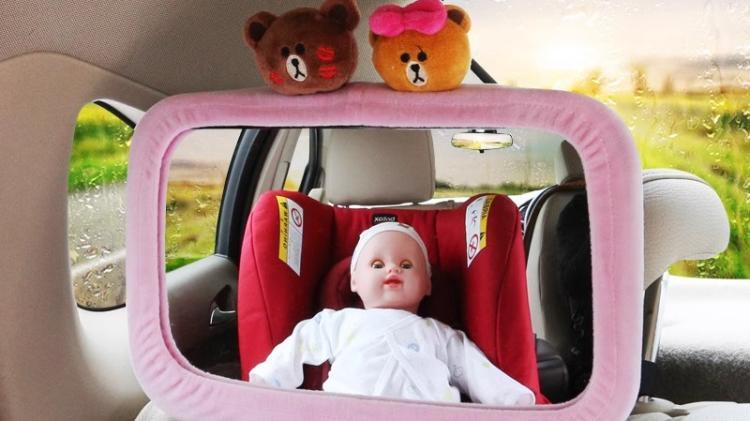
Case studies – Real-world mirror positioning examples
Analyzing examples of smart positioning choices accounting for true-to-life layout limitations and challenges provides insightful guidance for realistically optimizing angle adjustment and mounting locations in your vehicle.
Compact car rear-facing constraints: Limited backseat dimensions prompted a rounded mirror with a swiveling overhead clip perfectly centered above yet not touching the adjacent headrest for glare-free facial visibility.
Full-size SUV third-row scope: An extra large rectangular mirror edge-mounted on the rearview frame maximizes the cross-wide eyeliner spanning all three backseats.
Luxury car headliner integration: A custom-molded wedge mirror with an LED accent strip fills an indented channel in the suede headliner for perfect harmonious positioning.
Minivan aftermarket headrest solution: With eight seats, a universal clip-on mirror clamps securely onto the outboard passenger headrest doubling as a kind of blindspot periscope.
Get inspired realizing even cramped claustrophobic sedans to expansive vans have configurable solutions!
Compare case studies similar to your model against installation best practices when evaluating mounting positions and angle adjustment potential.
Identify any utilized ergonomic quirks or discrepancy opportunities unique to your car ripe for customization. Then leverage adaptations proven effective in real-world conditions to replicate visibility victories!
Conclusion
Safely securing clear sightlines to precious cargo deserves diligent mirror mounting care and positioning. Scan spatial parameters thoroughly when identifying installation locations Then meticulously yet pragmatically tweak multi-axis angles to optimize facial visibility without glare or obstructions. Stabilize adhesion properly to avoid detachments and strictly prohibit hazardous airbag proximity.
Additionally, we tailor solutions to counter darkness and support unusual layouts revealed through case study analysis. Internalizing geometrical positioning dynamics and implementing suitable adjustments ultimately allows drivers to relax confident every quick check-in glance reliably reveals babies riding content and protected!









